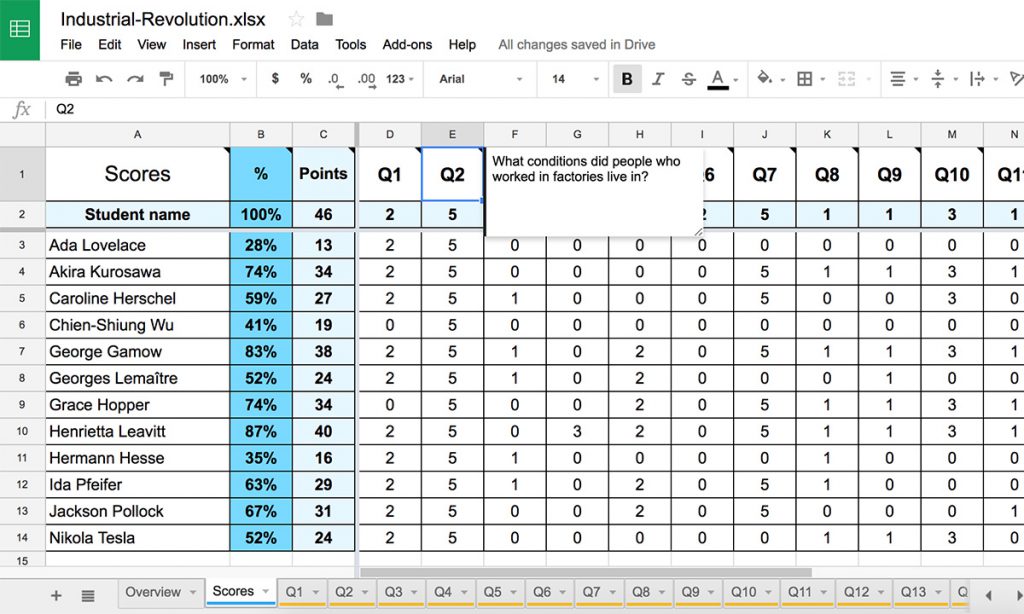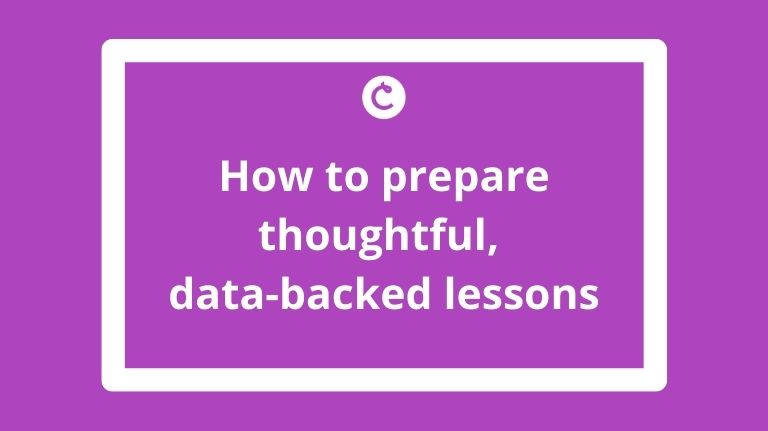How to prepare lessons for data-driven teaching
In our last post on differentiated instruction, one of the tips focused on preparing thoughtful, data-backed lessons. The strategies you use to differentiate the learning experience in your classroom should be based on effective and ongoing assessment of your students’ needs. Through data-driven teaching and utilizing learning analytics, you can easily assess where students stand regarding understanding. You’ll also need to pay close attention to what students do and say throughout your lessons, as this will provide useful information about how the student learns.

Tyler, a middle school math teacher from Colorado, tells us:
“I find that utilizing analytics in the classroom allows me to see where specific learner strengths and weaknesses are. I also pay close attention to student engagement and reactions to different lessons to look for difference in skill, interest, learning style. From my analysis of both data and student actions, I’m able to adjust my instruction and include differentiation strategies to meet each learner’s needs.”
While you’re analyzing student data and classroom behavior, you’ll want to look for three main ways that students differ from each other. Here, we’ll walk you through these student learning differences and how you can implement differentiation strategies for each.
Skill – One of the main student differences is the readiness of the learner. How prepared are they to tackle this subject or idea? Analyzing how students performed on past assignments will give you an idea of the student’s skills. Then you can implement differentiation strategies in response to each student’s readiness.
– Tiered activities allow students to work their way up. Create a variety of related tasks at varying difficulty levels and assign specific tasks based on certain groups or individual student skill levels.
– Split the class into groups based on skill level. You can then give more dedicated instruction time and support to those who need it while allowing others to work on different tasks in varying workstations.
How to do it: Classtime is a great tool to use for descriptive analytics. It allows you to export a PDF and Excel insights report for each session your class completes in the app. Create a session surrounding your lesson, motivate and engage your students, and then export the insights report to see how you can make data-backed lessons more effective.

Interest – Let’s face it, not all students love every subject. During class instruction, pay attention to what students like to learn about. What topics or activities excite your students? You can use this information to align key skills and material from a curriculum segment with their interests.
– Tailor assignments based on student interest. Refining avenues of learning based on a student’s interest will give them a reason to get excited about the material. For example, if you’re teaching a social studies class and see that a student is particularly interested in music, you can have them study the music of medieval England to explore the history, beliefs, and customs of the time.
– Provide access to a wide range of learning materials. Having different materials (books, activities, movies) will allow learners with different interests a variety of ways to learn about the topic you’re teaching.
– Give students a choice of tasks and assignments. By allowing students to choose their assignment, they’ll have more control over how they’ll learn the material, getting them more interested in the learning process.
Learning profile – Each student has a different way of learning shaped by their personality, culture, or learning style. When you’re teaching, you’ll notice that some students learn material best when working with others, while some work best alone. You may also notice that some students learn best when taught by example, some learn best by reading, while others may be auditory learners. You can then differentiate the instruction based on the differences you see in your students’ learning styles.
– Create a flexible learning environment. Having different spaces for varying activities and learning avenues allows different learners a variety of ways to understand the material.
– Allow both independent and group work. Giving students the option to work alone or with their peers allows them to work with the material the way they learn best. Carving out time for both will also foster competition, cooperation, and independence in the learning experience.
Now that you know what differences to look for when analyzing student data and behavior, you’ll be prepared to provide each of your students with the learning experience they need to succeed. But don’t forget that assessment is a continuous task. You’ll need to continuously analyze your data-backed lessons and student engagement.
Classtime can help you get started with data-backed lessons in the classroom today:

